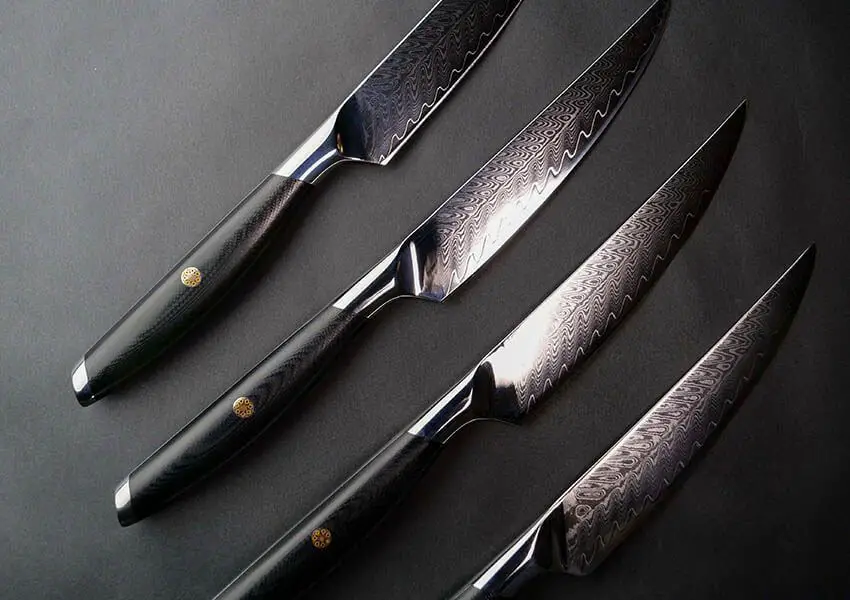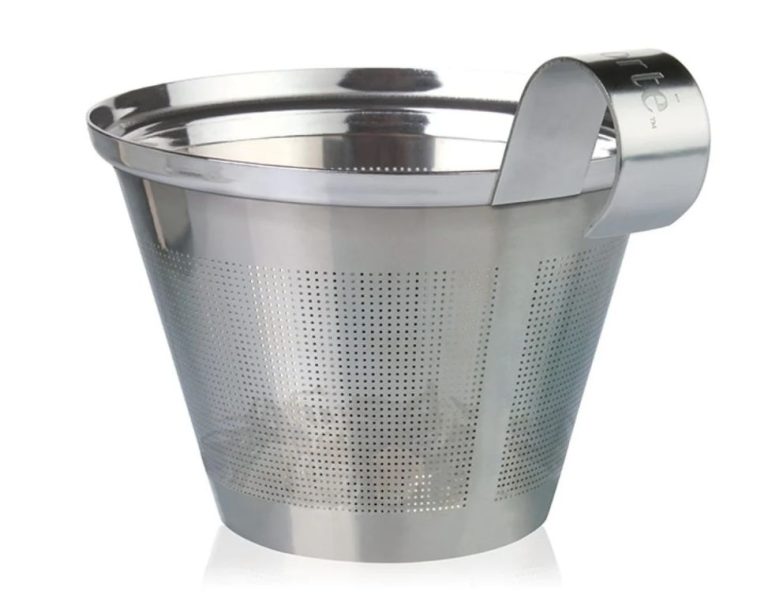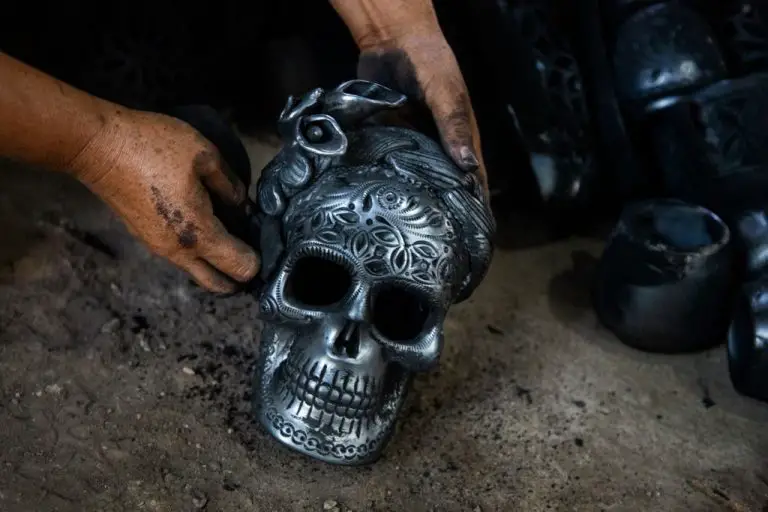What Grades Of Steel For Knives?
Steel is arguably the most important factor that determines the overall quality and performance of a knife. Not all steels are created equal, and the specific alloying elements,
heat treatment, and production process result in vast differences in characteristics like edge retention, corrosion resistance, toughness, and sharpenability.
Understanding the various grades of steel commonly used in knives allows you to select the right steel for your intended uses. Softer, less alloyed steels tend to be tougher but will not hold an edge as well. More alloyed stainless steels offer excellent corrosion resistance but can be brittle. Advanced powder metallurgy steels provide a fine balance of properties but are difficult to sharpen.
There are always tradeoffs – a steel that excels in edge retention may be prone to chipping, while a tough steel will need frequent sharpening. This article provides an overview of key steel grades, their composition, properties, and ideal uses, so you can determine the right steel for your needs.
Carbon Steels
Carbon steels are a group of steel alloys that have carbon as their primary alloying element. Some key properties of carbon steels are:
- High hardness and strength
- Relatively low cost
- Easy to sharpen
- Low corrosion resistance compared to stainless steels
The 10XX series carbon steels, such as 1095 and 1084, are the most popular grades used for knives. They typically contain between 0.8-1.2% carbon 1. The higher carbon content gives these steels good hardness and edge retention, but also makes them more brittle. 1095 steel can achieve a hardness around HRC 60-62 with proper heat treatment 2.
The key advantages of carbon steels for knives are hardness, ease of sharpening, and low cost. The main disadvantage is that they corrode and rust more easily than stainless steels. Proper care and maintenance is required when using a carbon steel knife.
Stainless Steels
Stainless steels are popular knife blade materials due to their resistance to corrosion and staining. While carbon steels can rust and discolor when exposed to moisture, stainless steels contain chromium that forms an invisible passive layer of chromium oxide on the metal surface. This prevents oxygen molecules from reaching the metal and triggering corrosion.
There are many different grades of stainless steel with varying properties. Some common grades used for knives include:
- 400 series stainless steels (420, 440, etc.) – These contain relatively low chromium content (typically 12-14%) and low carbon. They offer decent corrosion resistance but do not hold an edge well.
- 300 series stainless steels (304, 316, etc.) – With higher chromium content (~18%), these offer excellent corrosion resistance and are non-staining, but are too soft for most knife applications.
Some pros of stainless steels are corrosion and stain resistance, easy to maintain. Some cons are they don’t take as sharp of an edge and have to be sharpened more often than high carbon steels. According to the experts at Knife Steel Nerds, 400 series stainless steels like 440C can be ideal for EDC folders, while something like CPM-154 would be better suited for a hard use fixed blade.
Tool Steels
Tool steels are used for knives and cutting tools because they are very hard and wear resistant. According to the Blade HQ article, some popular tool steels for knives include D2, O1, Crucible’s CPM series (like CPM 3V), and advanced high speed steels like M4 (https://www.bladehq.com/cat–Steel-Types–332).
Tool steels contain more carbon and alloying elements like chromium, vanadium, molybdenum, and tungsten than other types of steel. This gives them excellent hardness, toughness, and edge retention. Some common tool steels used for knives include:
- A2 – Offers good wear resistance and edge retention. Tough but not very corrosion resistant.
- D2 – Very hard with excellent edge retention. More brittle than other tool steels.
- M2 – A versatile high-speed steel with great hardness and toughness.
- 154CM – Has good corrosion resistance while still being hard. Makes a good EDC knife steel.
The alloying elements in tool steels allow them to be heat treated to achieve optimal hardness (typically around 60 HRC) for knife blades. This hardness provides excellent edge retention and resistance to chipping. Tool steels are ideal for knives designed for heavy duty use.
Damascus Steel
Damascus steel is a type of pattern welded steel made from different types of steel alloys that are forge-welded together. The unique patterns on the blade come from the contrasting steels used in the layers. Damascus steel is known for its distinctive beauty and high-performance cutting ability.

To make Damascus steel, two or more types of steel, such as high and low carbon steel, are forge welded together into layers or rods. The rods are then twisted, folded, and welded again to create complex patterns. This process aligns the internal microstructure of the steel, improving strength and toughness. The steel is repeatedly heated, hammered, folded, and welded over several days until the desired number of layers is reached, which can be hundreds or thousands of layers.
Some key advantages of Damascus steel blades include:
- Attractive aesthetics from the flowing, rippling patterns
- Superior edge retention and cutting ability due to the carbide structure
- Increased strength and flexibility from the alternating layers of hard and tough steel
- Resistance to chipping and breaking
While more time-consuming to make than other types of steel, Damascus offers excellent performance with captivating beauty unmatched by other steels. The intricate patterns and colors on Damascus steel continue to make it highly prized for premium cutlery.
Comparing Steel Grades
When comparing steel grades for knives, the main properties to evaluate are edge retention, toughness, corrosion resistance, and ease of sharpening. According to knife steel experts, here’s how some common stainless and carbon steels compare:
For edge retention, higher alloy steels like CPM S30V, CPM S35VN, and CPM S110V rate the best. They hold an edge significantly longer than other steel grades before needing sharpening. However, they can be more difficult to sharpen. Chromium steels like D2 tool steel and 440C stainless also rate high in edge retention but are lower in other areas.
For toughness and impact resistance, carbon steels like 1095 and 5160 perform the best. Their simple metallurgy allows them to flex rather than chip or break. Tool steels like O1 and A2 are also known for good toughness and edge stability under impact. On the lower end, high alloy stainless steels tend to be more brittle with lower toughness.
For corrosion resistance, stainless steels of course perform the best. Higher chromium and nickel content improves resistance to rust and staining. 304 stainless is highly corrosion resistant but too soft for most knives. 440C, 420HC, 12C27, and 14C28N are common grades offering better hardness and wear resistance. D2 tool steel can also develop a stable patina.
For ease of sharpening, simple carbon steels and lower alloy stainless steels are preferable. 1095 carbon steel is very easy to sharpen, as are 420HC, 440C, and AUS-8 stainless. On the other end, high vanadium steels like S30V can be challenging for those without experience sharpening.
For larger knives that need high toughness, 52100 and 1095 carbon steels are ideal. For multi-purpose EDC folders, 154CM, VG-10, and CTS-BD1 strike a good balance. For fixed blade wilderness knives where corrosion resistance is critical, Elmax and CPM S35VN are top choices.
Heat Treating
Proper heat treating is extremely important when making knife blades. It has a significant effect on the final properties and performance of the blade. Heat treating involves precisely heating and cooling the steel to achieve desired characteristics.
The most common heat treating process is hardening and tempering. Hardening involves heating the steel above a critical temperature and then rapidly cooling or quenching it. This makes the steel very hard but also brittle. Tempering then involves reheating the steel to a lower temperature to reduce the brittleness and produce the final balance of hardness and toughness. The specific temperatures and times for hardening and tempering depend on the type of steel.
Through careful heat treating, bladesmiths can optimize qualities like edge retention, corrosion resistance, and tensile strength. Insufficient heat treating can lead to soft, dull edges. Excessive heat treating can make blades too brittle. With the right heat treating, 1095 carbon steel can achieve 60-62 HRC hardness, while stainless steels often aim for 56-58 HRC.
The effects of heat treating highlight the importance of choosing the right steel for the function of the knife. A properly heat treated 1095 can hold a very acute edge for cutting tasks. While a properly heat treated stainless steel may have a less acute edge, but gain corrosion resistance and easier re-sharpening. Overall, heat treating allows knife makers to get the most performance possible out of any given steel.
For more details on specific temperatures and processes for heat treating common knife steels, refer to these in-depth guides from USA Knifemaker and Jay Fisher.
Coatings
Knife blades can be coated with various materials to improve properties like corrosion resistance, wear resistance, and aesthetics. Some common coatings used on knife blades include:
Titanium Nitride (TiN) – This gold-colored coating is applied through a process called physical vapor deposition. It helps protect against corrosion and improves wear resistance. TiN also reduces friction and can give the blade a more appealing look.
Diamond-like Carbon (DLC) – DLC coatings are extremely hard and durable. They provide excellent corrosion resistance and a lower coefficient of friction. DLC has a dark charcoal color. It is commonly used on high-end tactical and survival knives.
Ceramic coatings like titanium carbonitride (TiCN) and zirconium nitride (ZrN) can also be used. These increase hardness, enhance corrosion resistance, and reduce friction.
Coatings help improve blade performance and longevity. The slipperiness of coatings like TiN and DLC reduces drag when cutting. The enhanced surface hardness provides better wear resistance. And coatings greatly reduce reactivity with air and moisture to prevent rust and staining.
Choosing the Right Steel
When selecting the right steel grade for a knife, there are several factors to consider based on the intended use and desired qualities:
Hardness – Harder steels generally hold an edge better but are more brittle. For tasks like chopping, softer steels around 52-54 HRC may be preferable to prevent chipping. For fine slicing tasks, harder steels near 60 HRC are ideal.
Toughness – Steels like D2 tool steel offer a balance of hardness and toughness suitable for heavier duty cutting tools. More brittle alloys like high carbon steels may not withstand impacts as well.
Corrosion Resistance – For kitchen knives used with acidic foods, stainless steels offer the best corrosion resistance. Carbon steels require more maintenance to prevent rusting but can take a finer edge.
Sharpenability – Low alloy powder steels like CPM-S30V are more challenging to sharpen without special equipment. Simple carbon steels are easier for the average user to sharpen as needed.
Edge Retention – Steels with high carbide volume like S90V hold an edge remarkably well but can be difficult to sharpen. AUS-8 offers a good balance of edge retention and ease of sharpening.
Price – Exotic alloys carry a premium cost while carbon steels like 1095 provide an affordable option. The intended budget can help narrow options.
By balancing these factors against the intended role of the knife, buyers can select a steel grade optimized for strength, corrosion resistance, edge qualities, and ease of maintenance needed for the task.
Conclusion
In summary, the key points when choosing a steel grade for knives are:
- Carbon steels like 1095 and O1 offer good edge retention but low corrosion resistance.
- Stainless steels like 440C provide decent corrosion resistance and edge retention.
- Tool steels like D2 and A2 provide excellent edge retention and moderate corrosion resistance.
- Damascus steel provides a beautiful patterned aesthetic but properties vary based on the component steels.
- Heat treating and coatings like titanium nitride can enhance a steel’s properties.
When selecting a steel, consider the intended use and your priorities – edge retention, corrosion resistance, toughness, ease of sharpening, and appearance. For most uses, stainless steels offer a good balance. Tool steels provide exceptional edge retention for harder use. Carbon steels are excellent budget options but require more care. Damascus provides unique aesthetic qualities. Coatings and proper heat treating can optimize performance.
Test different steels first-hand to get a feel for their sharpening, edge retention and corrosion resistance. For critical uses, don’t depend on a steel’s reputation alone. Evaluate performance through your own real-world experience.





